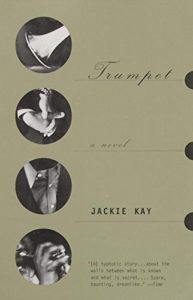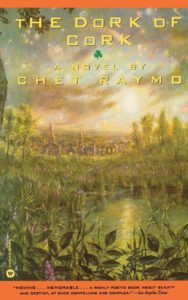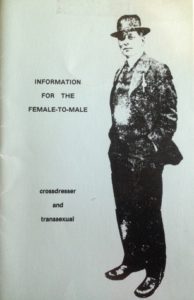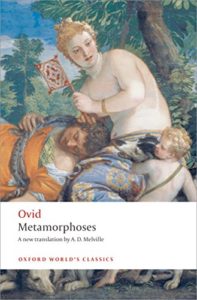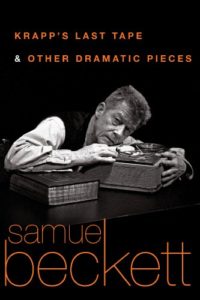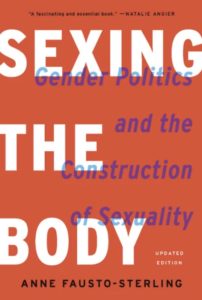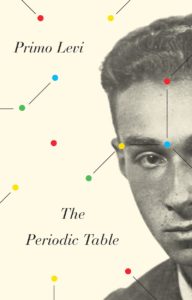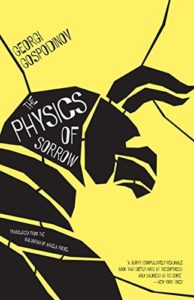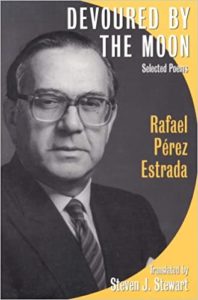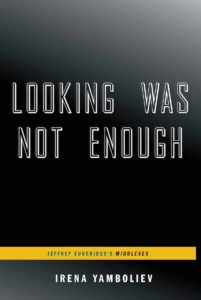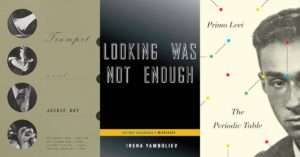
The reading list below is inspired by my strong and enduring reaction to Jeffrey Eugenides’s Middlesex, a novel about watching oneself transform and trying to bring the “before” and “after” selves into harmony. The books gathered here explore what it’s like to feel discontinuous within oneself, and to find or forge continuity.
My list spans two centers of gravity that organize Middlesex, and two senses in which a self might feel discontinuous. A self might feel fragmentary or composite because it weaves together different histories—personal history, family history, and the more broadly public, political, and social histories that shape us. Many of the books here are about how an individual narrates herself in relation to a past self, or to generations of her family, or across linguistic and cultural borders, or through large-scale historical events. Or, we might feel discontinuous in another way, one that has to do more intimately with the body, and with how we perform our inner selves within our bodies, and how those we desire see us or don’t, or grow to see us over time, through a process of translation and transformation. This second thread dramatizes bodies and loves and sexes. These texts take up how bodies live with and around and sometimes radically against outdated categories and binaries. And sometimes, a book will braid those two forms of discontinuity together—the generational and historical forces and the gendered forces.
The attempt to hold discontinuities in some sort of harmonious suspension is a longstanding literary preoccupation. A major genre—the novel of development—promises a coherent through-line connecting the youthful self and the adult, as Middlesex does. Other books face the multiplicity of the self via multi-perspectival narratives that can highlight the discrepancies between versions of the self and the impossibility of reconciling them. And beyond fiction and poetry, nonfiction like handbooks and critical essays speak to the strenuous work of mediating forces that demand we hold ourselves in ways that keep faith with often arbitrary social constructs. In complementary ways and in different moments of my life as a reader, these examples of imaginative and scholarly writing have galvanized me to recognize the gaps between what exists on the interior and what gets performed—differently, for different audiences—on the outside.
***
Trumpet by Jackie Kay
Caribbean-British author Jackie Kay devotes her novel’s pages to a tale of gender and performance—in the most literal senses—from real life. Trumpet fictionalizes the story of Billy Tipton, a transgender American jazz musician who lived in the 1950s. Born a woman, Tipton lived as a man for five decades because he wanted a career as a trumpet player in an era that had little room for women jazz musicians. Kay relocates the story to Scotland and makes the character Black, so that race further intensifies her exploration of the high stakes of others reading one’s surface. Trumpet’s chapters are written from the perspective of characters other than the Billy Tipton figure, as they each work through their perceptions and memories of him in the wake of his death. We hear from his widow, who shared his secret for many years, from his son, who didn’t, from a journalist seeking to make a splash by publicizing this very private reality. Like Middlesex, Trumpet offers a kaleidoscope of portraits that read the face and the work of the person alongside—and against—the rest of their anatomy. It’s a story of self-creation and of inheritance. Much like Eugenides’s protagonist Cal, the Billy Tipton character says: “You make up your own bloodline … Make it up and trace it back. Design your own family tree … You pick the one you like best and that one is true.”
The Dork of Cork by Chet Raymo
Also like Middlesex’s Cal, the hero of The Dork of Cork, Frank Bois, is an inheritor of stories that were written in wartime and that write themselves on his body. His parents immigrate because of war, his French mother fleeing her small town after a British bomb washes up on the beach and kills all of her childhood playmates, to fall in love with the British soldier who will be Frank’s father. Frank Bois meditates on how his visible exterior—he has a genetic condition that results in dwarfism—lines up or doesn’t with his inner life. How to tell oneself, especially when you have a body others are quick to characterize, also raises questions about how medical discourse, public writing, and photography create portraits. And, like Middlesex and other texts in this list, The Dork of Cork shows how love can be the occasion to curate, revise, or abandon one’s previous self-portraits.
S/Z by Roland Barthes
This book-length essay by the most stylish of literary critics is a text deeply bifurcated in its own right and centered, like Middlesex, on an ambiguous sex. It’s here that Barthes performs his distinctive method of reading extremely closely, with attention to the cultural codes embedded in tiny units of language, in turns of phrase. Just as we all “read” minuscule features of another’s appearance and mannerisms and clothing and use these, even unconsciously, as coordinates to help us probe the mystery inside that person, Barthes reads tiny features of a story by Honoré de Balzac to reveal that text’s mystery. It’s not by accident that Barthes chooses a story about someone who is born a man and lives as a woman in eighteenth-century Italy, for whom the stakes of being read or misread are especially high. Sparkling and personal, Barthes’s analysis explodes what Balzac’s story exploits, the constraining sign systems we build around what a man is like and what a woman is like. He seems to do so in hopes that in the future, these cultural codes will be outdated—a future, perhaps, like the one Cal dreams of in Middlesex.
Information for the Female-to-Male Crossdresser and Transsexual by Louis Sullivan
A classic of intersex rights literature and a fruit of San Francisco, where the Intersex Society of North American began in the early 1990s. Writes Sullivan, “The major task of the female-to-male is to (all by himself) openly define his innermost feelings, find a place for those feelings in his life, and map a course of implementation.” On the back cover, Sullivan’s text describes itself as “The first handbook to address the needs of the female-to-male,” and tells its readers they’ll find sections on Crossdressing, Passing as a Man, Hormones, Sex Reassignment, and Dozens of True Stories of Females Who Crossed Over. A compassionate and clear-sighted balance of the philosophical and the practical, it gives pep talks and dress tips, advice for the families of those who are transitioning, and a bibliography of books and films. This deeply moving handbook reads like exactly what the young protagonist of Middlesex needs to hear as he makes his own transition, worrying about how to walk like a man, how to use public restrooms, how to reveal himself to his love interest. Sullivan self-published these slim sixty pages on Haight Street in 1985, and made them available by mail order. They reached trans men all over the world.
Metamorphoses by Ovid
What better set of prompts to think about transformation and continuity than the ancient Greek myths collected in the Metamorphoses. Every myth depicts a transformation, and every transformation raises, in different terms, the question of whether a self can be discontinuous. Is transformation a punishment? A reward? A fitting consequence? In any case, the changes that happen in the Metamorphoses are relational—they happen as people interact with other humans, or with gods. No one gets transformed sitting alone. And so, here as in later iterations of these myths such as Middlesex or Anne Carson’s Autobiography of Red, the self’s continuity or discontinuity depends on the eyes, on the perspective of the viewer, and on the mood of its describer.
Krapp’s Last Tape by Samuel Beckett
Beckett’s one-act play dramatizes an experience I hope I can avoid but fear I all too likely won’t: the experience of looking over self-narrations you’ve produced in your youth, journals or essays, or letters—or, as in Krapp’s case, audio recordings—and not being able to recognize your younger self. If Middlesex offers an optimist’s take on what happens as we grow older, and we integrate all our different selves into a harmonious whole, Beckett’s play shows us the less rosy possibility: that the more we look back on our previous selves, the more likely we are to quarrel with that self.
Sexing the Body: Gender Politics and the Construction of Sexuality by Anne Fausto-Sterling
This is a classic text on the socially constructed nature of sex and anatomy, by a biologist speaking across disciplines to show how culture shapes science and scientists help politicize bodies. Its most widely known section, perhaps, is the essay Fausto-Sterling originally published in 1993 in American Scientist with the tongue-in-cheek title “The Five Sexes.” Therein she proposes that we need more than two descriptors for the range of shapes human bodies take, of which there are at least five (though five, she admitted, was an arbitrary number). Fausto-Sterling traces the way legal and medical cultures have constrained the discourse around the body’s sex, leveraging biology to categorize something that overflows neat categories. And she relates the stories of real-life individuals who lived in their bodies as they were, not as institutions wanted them to be. The essay elicited spirited responses from outspoken champions of the intersex rights movement such as Cheryl Chase, who founded the Intersex Society of North America that same year. In this book, Fausto-Sterling revisits her “Five Sexes” and adds to it, showing the ancient and contemporary ways language and labeling have propelled efforts to hold bodies that demand to be free.
The Periodic Table by Primo Levi
Levi’s luminous novel is in part based on his own story of living through World War II. Like Eugenides’s Cal, Levi, who was trained as a chemist, finds in science a metaphoric vocabulary to help him narrate himself. As he tells how his life gets shorn by political reality, he links each episode of his life to a chemical element in the periodic table of the elements. Each element brings powerful associations—lead with alchemy and poison, phosphorus with light, carbon with life—in a masterpiece as celebratory of life as it is heartbreaking. It’s as though the telling wouldn’t be possible without the “nucleus” of each named element to help the story condense around it. The Royal Institution named this the best science book ever written. For me, it’s the best book about telling a story of oneself ever written. “It is possible to demonstrate that this completely arbitrary story is nevertheless true,” Levi writes on his last page, making peace with, even reveling in, the vital partialness of all storytelling: “I could tell innumerable other stories, and they would all be true.”
The Physics of Sorrow by Georgi Gospodinov
In his essay “The Story Smuggler,” Gospodinov asks, “Are we, and our childhoods, translatable? Our bodies? And how are we to translate what never happened to us?… We translate—which is to say we literally carry over—whatever is desired, valued, missing, suppressed, forbidden.” Gospodinov’s second novel, The Physics of Sorrow, is an act of smuggling into language those things that Gospodinov desired, valued, found missing and forbidden as he grew up in Communist Bulgaria. Bulgaria, neighbor of the Greek Asia Minor where Middlesex begins, and similarly situated at the geographical crossroads holding East and West together, is a rich site of discontinuities that Gospodinov traces as he tells stories about his family, jumping from viewpoint to viewpoint. Like Eugenides’s Cal, Gospodinov takes the Minotaur as figure for the self that gets misunderstood by onlookers, who compel us to translate ourselves to become legible for them. This book embraces the labyrinthine quality of the self in its form as well as its storyline, reading more often like essay than straight-up narrative.
Devoured by the Moon by Rafael Pérez Estrada
This book of prose poems holds together two literary modes that are also modes of thinking and valuing—the poetic and the prosaic. Pérez Estrada’s world is a magical realist one, built on myth and fantasy of a uniquely Spanish Mediterranean style. The poems are short, often just one dense paragraph, but they dream of loves that might be possible in ways that feel especially moving in relation to the difficulties of unconventional loves like Cal’s. There’s a prose poem about a girl who falls in love with a jacaranda tree, another about a girl who loves a hippopotamus, and as these characters carve out space for their loves, I hear them echoing the words of the character Zora in Middlesex, who is unashamed about her intersex shape, and who says, “We’re what’s next.”
And to close out this wonderful list, we just had to include Irena’s new book, Looking Was Not Enough: Jeffrey Eugenides’s MIDDLESEX, forthcoming on August 25 from Fiction Advocate! – Ed.
Looking Was Not Enough: Jeffrey Eugenides’s MIDDLESEX by Irena Yamboliev
Middlesex is the story of a character who changes profoundly in order to remain fundamentally himself. It’s about recognizing how risky and contingent any physical description is, and how ambiguous dualities can be blended into beautifully coherent wholes. As the child of Bulgarian immigrants, Irena Yamboliev knows what it’s like to construct your own identity. In Looking Was Not Enough, she uses her background in biology and literary scholarship to put Middlesex into conversation with Barthes, Ovid, and other texts that examine the way our gender, sex, nationality, and culture can experience a metamorphosis. The result is an illuminating theory of our own self-formations.

